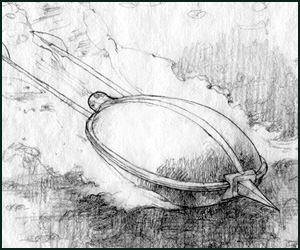Foundations of Islamic Technology and Engineering
The demands of a vast civilisation, which extended from
This pattern is repeated everywhere Muslims advanced, and in and
around all the new cities they founded: Kufa,
These multiple instances serve to demonstrate how ridiculous is
the assertion found amongst most Western historians that Muslims
only kept engineering works from previous cultures, when such
new cities and their engineering works did not exist before
Islam.
Social demand had a further impact on technological advance.
Hill explains that the standard of technology at any time
depends mainly upon the demands of society, and that wherever
there are large urban communities to be fed, clothed and
provided with the raw and finished materials for commerce, there
is to be found technology applied to agriculture, communications
and industry.[12]
Muslim geographers in the 10th century described a
society in which the range of foodstuffs, the quality of
textiles, and the standards of living in general were far more
advanced than those of
Hill also points out to the fundamental element already shown
here repeatedly, how the demands of the faith stimulated
sciences, in this instance through the requirement of
astronomers for timepieces and for observational and
computational instruments.[18]
Stock
also notes how in Islam the dependence on well made apparatuses
did not just mean that theory and practice were brought closer
together, but also that scientists such as al-Battani were also
expert makers of instruments that enhanced their powers of
observation and calculation.[19]
Very
possibly due to these factors, the status of the
artisan/craftsman in Islam was quite high, especially in
comparison to the Christian West. Stock points out, that it may
be, that Bernard of Tiron, a wandering preacher who died in
1117, founded a house specifically as a haven for craftsmen, but
the real model for change came once again from Islam, in which
the status of the artisan had changed from that of the slave to
that of the free labourer.[20]
The artisan scientist, who was considered an aberration in the
ancient world, was more a norm in Islam, artisans playing a
leading part in the transfer of techniques throughout the highly
mobile Muslim world.[21]
The importance Muslims granted their craftsmen or instrument
makers is also noted by Sarton ‘in the extravagant praise'
lavished on the instrument maker: Badi al-Astrulabi.[22]
Both this attitude to the artisan and his status were eventually
transferred to Christendom.[23]
Islamic waqfs (religious endowments) also stimulated and made
possible the construction, maintenance, and management of large
engineering structures and works. The
waqfs were central in the management of canalisation networks.[24]
In
The
early Islamic state provided a legal corpus and an
administrative framework in the implementation and
management of civil engineering works. The legal corpus, for
instance, stated amongst other things that canals are the
property of the landowner or landowners in whose property they
are located; where they are the common property of several
landowners, none of them may make unilateral changes in
arrangements such as sharing the water, building a mill or
bridge over it, etc.[32]
The responsibility for the upkeep of great rivers in some parts
was vested in the imam, and cleaning or dredging and repair of
their banks was carried out by the imam and paid for by the
public treasury.[33]
Other arrangements were prevalent; in
[1]
G. Anawati: Science, in The Cambridge History of
Islam, ed P.M. Holt et al;
vol 2 (Cambridge University Press, 1970),
pp. 741-79, at p. 756.
[2]
Al-Baladhuri: Kitab Futuh al-Buldan; Ed. M. J. de
Goeje (Brill; Leiden; 1866); pp. 345-71.
[3]
Al-Baladhuri: Kitab; in D.R. Hill: A History of
Engineering; op cit; p.25.
[4]
Ibid.
[5]
Ibid.
[6]
Ibid.
[7]
Al-Istakhri: Kitab al-Masalik wa’l mamalik; Ed.
M.G. Al-Hini (
[8]
D.R. Hill: A History of Engineering; op cit;
p.25.
[9]
E. Levi Provencal: La Fondation de Fes
; in Islam d’Occident (Librairie Orientale et
Americaine; Paris; 1948), pp. 1-32.
[10]
R. le Tourneau: Fes
avant le
protectorat
(Casablanca; 1949), pp. 232-9.
Editor: irrigation in
[11]
A. Solignac: Recherches sur les installations
hydrauliques de kairaouan et des Steppes Tunisiennes du
VII au Xiem siecle, in
Annales de
l’Institut des Etudes Orientales, Algiers
, X (1952); 5-273.
[12]
D.R. Hill: A History of Engineering; op cit;
p.4.
[13]
Ibid.
[14]
Ibid.
[15]
Such as Ibn al-Ukhuwwa: Ma’alim al-Qurba fi Ahkam
al-Hisba; ed by Reuben Levy; With Arabic text; notes
and abridged English translation (Gibb Memorial Series);
New Series (
[16]
D.R. Hill: A History of Engineering; op cit; p.9.
[17]
Ibid.
[18]
Ibid; p.4.
[19]
B. Stock: Science,
Technology
, and Economic Progress in the Early Middle Ages: in
Science in the Middle Ages; ed by D.C. Lindberg (The
University of Chicago Press, Chicago, 1978);
pp. 1-51;
p. 21.
[20]
Ibid; p. 31.
[21]
Ibid; pp. 21 and 31.
[22]
G. Sarton: Introduction, op cit, vol 2;
p.13.
[23]
B. Stock: Science, op cit, p. 21.
[24]
S. Denoix: Bilans in Grandes Villes; op cit; p.
294.
[25]
Ibid.
[26]
A.K.S. Lambton: Ma’, in Encyclopaedia of Islam;
op cit; vol 5; p. 871.
[27]
Ibid.
[28]
S. Denoix: Bilans; op cit; p. 294.
[29]
A.K.S. Lambton: Ma’, in Encyclopaedia of Islam;
op cit; vol 5; p. 876.
[30]
Al-Istakhri: Kitab Masalik wal-Mamlik; ed. De
Goeje (
[31]
Ibid; p. 177.
[32]
M.J.L. Young: Water
in Classical
Islam; under Ma’; Encyclopaedia of Islam; op cit;
vol 5; New Series; p. 860.
[33]
A.K.S. Lambton: Ma’, in Encyclopaedia of Islam;
op cit; vol 5; p. 873.
[34]
S. Denoix: Bilans; op cit; p. 294.
[35]
Al- Nuwayri: Nihayat al-Arab (
[36]
Al-Makrizi: Khitat,
[37]
D. Behrens Abouseif et al:
[38]
H. Rabie:
Pre-20th century irrigation in
[39]
Ibid; p 862.
[40]
D. Behrens Abousseif et al:
[41]
C. Cahen: Irrigation in
[42]
G. Wiet et al: History; op cit. p. 312.
[43]
Al-Istakhri: Kitab al-massalik; op cit; p. 145. |
